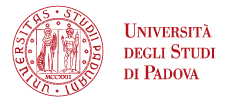
Fascial Manipulation
Fascial Manipulation (FM) represents an innovative rehabilitative technique that aims to treat the entire organism rather than just the muscle, specific organ, or joint; this shifts the therapeutic focus from symptom treatment to addressing the cause with the goal of improving the patient's quality of life.
This rehabilitative technique acts on the fascia, the true motor of movement. The fascia is a connective membrane capable of coordinating all the variables involved in movement, allowing the transmission of forces to create complex, fluid, and coordinated movements.
Furthermore, fascial manipulation recognizes pain as a fundamental diagnostic signal, using it to identify and treat the cause of dysfunction, rather than masking it with analgesics, thus preserving the integrity of the organism.
In the fascia particular points are identified, defined Centers of Coordination and Centers of Fusion, which, if treated with FM, can alleviate and resolve painful symptoms; in fact, these points represent the main site of tension, which is the cause of pain.
With fascial manipulation, not only the dysfunctions of the locomotor system are treated, but also internal organic dysfunctions, seeking causes and solutions for conditions that are typically not approached by conventional manipulative therapy.
The method of fascial manipulation was developed for human medicine by Luigi Stecco and later translated to veterinary medicine by Tuulia Luomalia and Mika Philman, instructors of the courses here proposed.
Years of study and research have been dedicated to this method, leading to the publication of numerous scientific articles and books. At this link, you can find more detailed information on the method of fascial manipulation, its school, various courses, and related publications.





